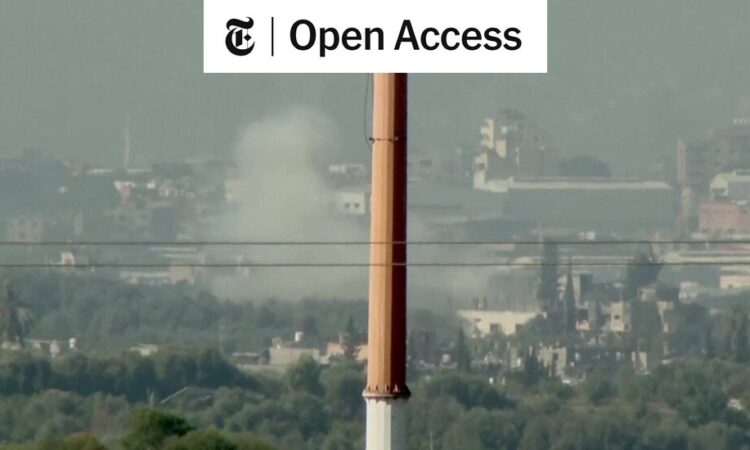
Pocked with airstrike craters and lined by Israeli tanks and the shells of what used to be buildings, Salah al-Din Road is the only way to leave the northern part of Gaza for the south, where Israel has told civilians to go “for their own safety.”
As Israeli forces intensify a ground assault into northern Gaza, thousands of desperate people are heading down the road during a daily window in which the Israeli military has said it will guarantee safe passage.
The United Nations estimated that, through Tuesday, at least 40,000 people had walked out of northern Gaza toward the south, with 15,000 people making the trek on Tuesday alone.
News photographs as well as a video released by the Israeli military on Wednesday afternoon, the fifth day the evacuation corridor was open, showed part of their passage: men, women and children moving on foot past half-destroyed buildings, in some cases waving white flags, down a road named for one of history’s most famous Muslim conquerors. They carry small bags, but no suitcases. Some ride on donkey carts, but most are on foot.
The United Nations said that most of those who made the hourslong trip on Tuesday, including children, older people and those with disabilities, traveled on foot with few belongings. It said some arriving in the south reported having to cross Israeli checkpoints, where they said Israeli forces had been making arrests.
The Israeli military denied it had put up checkpoints along the road and maintained Hamas, not Israel, was making the passage south difficult.
But some Gazans who have made or attempted the journey in recent days have described being fired at from the direction of Israeli tanks, despite the promise of safe passage, while others said they had seen bodies, or parts of bodies, scattered around the road. The United Nations is aware of such reports but has not identified who was responsible, said one U.N. official who asked not to be identified because of the sensitivity of the matter.
Asked about reports of Israeli tanks firing at refugees, the Israeli military said in a statement that it had been targeting Hamas throughout Gaza. It said its attacks on military targets were conducted under international law, including taking “feasible precautions to mitigate civilian casualties.”
On Sunday, Anas Al Kourd, a paramedic at Al Shifa Hospital in Gaza City, drove south with his cousin, whose legs had been amputated after she was wounded in the war, and others, including four children. Theirs was the only car in sight. Around them, everyone held their hands up in a gesture of surrender as they walked, carrying little but white flags, he said.
As they approached Kuwait Square, a major intersection in Gaza City, they came under fire, forcing them to retreat, he said. Two or three times they tried to move forward, only to have to turn around again because of incoming fire.
When they finally made it to the square, he said, he could see more than 50 Israeli tanks nearby, sitting where an olive grove used to be. He said he waved the blanket covering his cousin in place of a white flag, while some of his companions, who are dual citizens, waved their red German passports.
Mr. Al Kourd had covered about a third of the remaining distance to the middle zone of Gaza, bumping over splintered trees and concrete blocks, when he said they were fired on again. He was driving at “mad speed” to escape, he said, when a missile or bomb from a warplane hit nearby. No one was struck, but their car hit a crater in the road and went flying, he said.
“I don’t know how we survived,” he said a day later, having made it to the middle zone of the Gaza Strip. His account could not be independently confirmed.
The evacuations from north Gaza may have accelerated in part because of the sharply deteriorating humanitarian situation there, with food and clean water now nearly nonexistent.
Yet some people have decided not to leave, seeing the south as no safer or tied to the north by other concerns. Among those who have stayed are relatives of Hiba Tibi, the West Bank and Gaza director for CARE International, an aid group.
For days now, she said, they have not had bread. When they ventured outside for food on Tuesday, they told her, they could find only a few cucumbers and lemons for sale to feed 13 people. The cucumbers cost eight times what they used to.
Her uncle told her that he had already rationed his own meals, and that the older members of the family “will need to start to skip meals,” she added.
Her relatives stayed, she said, because her uncle needs dialysis at Al Shifa Hospital. Unable to walk, his eyesight damaged, he makes the 30-minute trip to the hospital on his son’s back.
Only five of the nearly 30 apartments in her uncle’s building remain occupied, Ms. Tibi said. The rest of his neighbors have moved south.
Ameera Harouda and Hwaida Saad contributed reporting.





